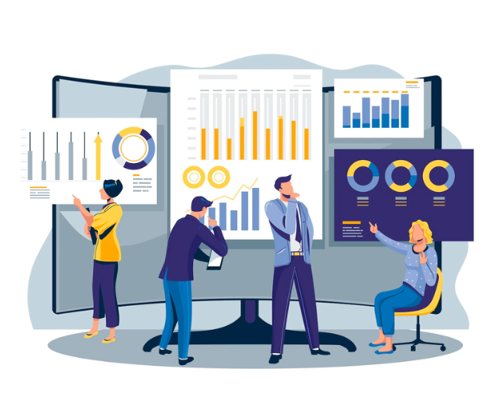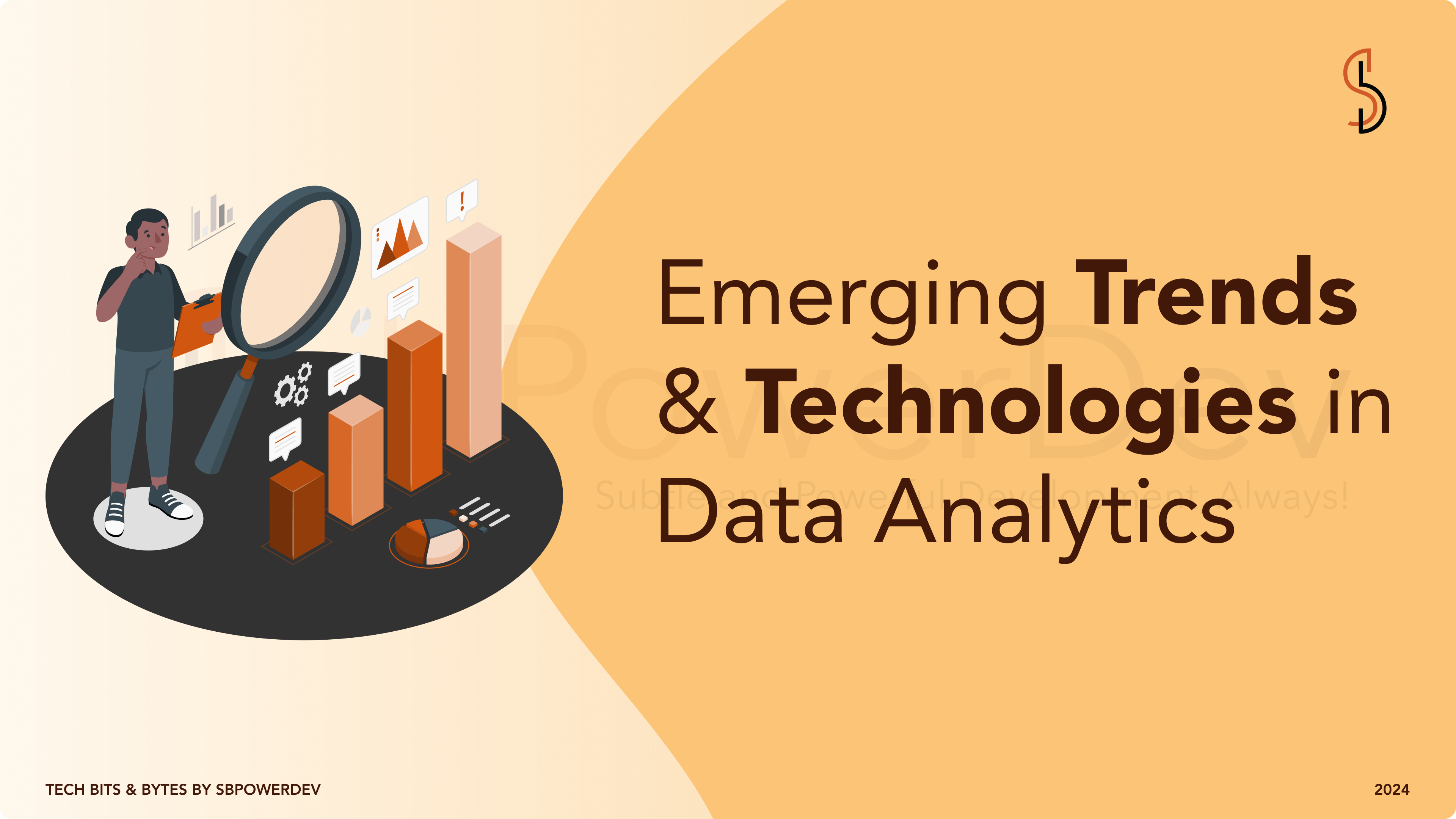Technological advancements in data analytics have heavily impacted how data is accessed, gleaned, and governed over the years. Many enterprises today have access to compelling tools, the latest technologies, and streamlined processes for decoding, identifying, and utilizing insights. As new technology and trends continue to emerge every year, they also increase best practices and shorten vicious data cycles.

Here are 10 Major Data Analytics Trends to Monitor in 2024:
1. Augmented Analytics:
By utilizing AI and machine learning, augmented analytics has the potential to completely transform data analysis. People will be able to communicate with data in 2024 thanks to the combination of automated insights and natural language processing (NLP). Even for non-technical users, this trend will streamline the information extraction procedure from datasets. The combination of intuition with AI-powered analytics offers significant potential in today’s environment where data plays a role.
2. Edge Analytics:
By processing data at its source and lowering latency, edge analytics is becoming increasingly important as devices proliferate. As a result, making decisions instantly and without delay is made possible. This trend will be very beneficial to the manufacturing, healthcare, and logistics sectors. In addition, Edge Analytics is revolutionizing a variety of industries’ data processing and insight-generating practices.
3. Data Observability:
Keeping an eye on data reliability is difficult for organizations; in other words, handling and preserving data is a whole different ball game. They can easily keep an eye on, track, and guarantee the performance, dependability, and quality of data throughout its lifecycle thanks to data observability. 85% of businesses rely on analytics and data-driven decision-making.
Data Quality Monitoring, Data Lineage and Traceability, Data Performance Monitoring, Data Security and Compliance, Alerting and Notifications, Data Governance, Metadata Management, Data Documentation, Data Auditing and Logging, Machine Learning Observability, Collaboration and Communication, and Continuous Improvement are some of the most important components of data observability for organizations.
4. Data Governance and Ethics:
Organizations are placing a strong emphasis on ethical data usage and strong data governance in response to data rules and growing concerns about data privacy. AI tools will be important for retaining customer trust and making sure regulations are followed. The most important topic is governance and ethics, which is extensively discussed in data handling businesses throughout all industries.
5. Data Fabrics:
By managing and analysing vast and complicated information, obtaining real-time insights from data, and adopting data governance and AI/ML, data fabric can assist businesses in addressing some of the major difficulties they are now experiencing.
The volume and complexity of data are rising: More data than ever before is being generated and gathered by businesses today. It is challenging to access and manage this data since it is frequently kept in several distinct systems and repositories. Data fabrics facilitate quicker access to and analysis of data by offering a uniform picture of data from all sources.
Real-time data insights are necessary because a lot of firms nowadays need to be able to make decisions based on them. Data fabrics offer a framework for streaming data processing and analytics, which can assist enterprises in gaining real-time data insights.
6. Data Mesh Architecture:
Data mesh architecture is a decentralized method of managing data that emphasizes granting all users access to and consumption of data. Compared to conventional designs, this method of data management is more adaptable and scalable.
Businesses that need to manage big, complicated datasets, get insights from data in real time, implement data governance and AI/ML, and be flexible enough to adjust to changing data requirements may consider using data mesh architecture.
A few businesses that use data mesh architecture are Walmart, Target, Netflix, Spotify, and Airbnb. These businesses are enhancing their data management, analytics, and decision-making skills by utilizing data mesh architecture.
7. Continuous Intelligence:
By utilizing real-time data, continuous intelligence seeks to enable action. Utilizing the information flow to aid in decision-making is the aim. Businesses will begin to adopt the technique of using data to quickly and intelligently make decisions in 2024. They will be able to adapt to new chances and situations as a result.
Real-time data ingestion, data processing and analysis, automation, integration with business processes, and predictive and prescriptive analytics are important components of continuous intelligence. Simply said, businesses will be able to enhance business operations and make better decisions.
8. Graph Analytics:
An important trend to watch is the increasing use of graph databases and analytics in fields including fraud detection, recommendation systems, and networking. These technologies are excellent at finding patterns in data and offering insights.
Graph analytics is considered a perceptive method for finding hidden patterns, forecasting, and understanding intricate systems that may be shown as graphs. Node and Edge Properties, Centrality Analysis, Community Detection, Path Analysis, Graph Traversal, Graph Databases, Graph Visualization, Anomaly Detection, and Machine Learning on Graphs are a few of the fundamental ideas and methods in graph analytics.
9. XAI (Explainable AI):
It’s important to comprehend the thinking behind AI models’ actions as they get more complicated. The importance of accountability and transparency in AI analytics will draw more attention to AI methods.
There is a lot of research being done in the subject of XAI to make it more useful. It is essential to improving the accountability, transparency, and dependability of AI across a range of applications. It fills the void left by the complexity of contemporary AI models and the requirement for human comprehension and supervision.
9. Data Democratization:
This movement is also anticipated to pick up steam. The creation of user-self-service analytics systems will improve non-technical people’s access to data. People with diverse backgrounds may now independently examine and evaluate data from various organizations thanks to this empowering trend. Put simply, regardless of their level of technical knowledge or experience, data democratization enables a larger variety of workers and stakeholders to access, use, and gain insights from data.
It is equally crucial to keep in mind that building an inclusive and data-savvy organization through strategic leadership and continuous effort is necessary for successful data democratization.
Conclusion:
As organizations use the power of data analytics, they must strike a balance between innovation and accountability. Leveraging data’s potential in business and society requires an understanding of its patterns. Analysing data and producing insights that can lead to real-world business results are necessary for this.
Unleash the Power of Data Analytics with sbPowerDev’s powerful data analytics solution, which helps you analyse large sets of data, uncover patterns, trends, and insights, and make informed business or research decisions.
Stay tuned for more.















